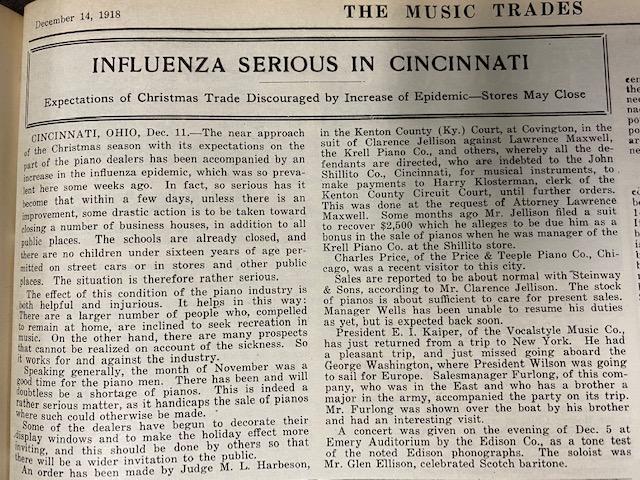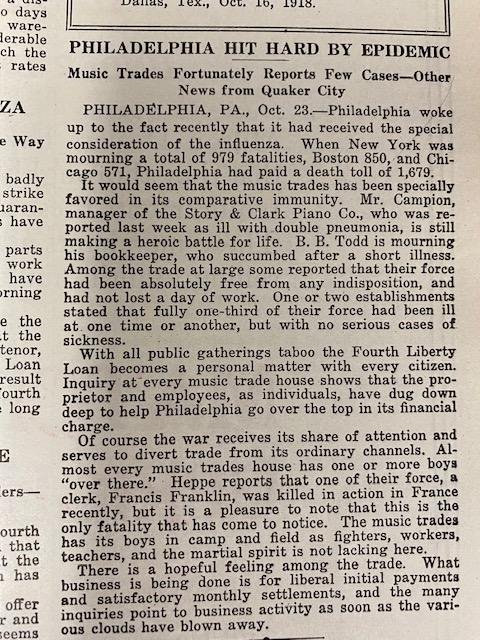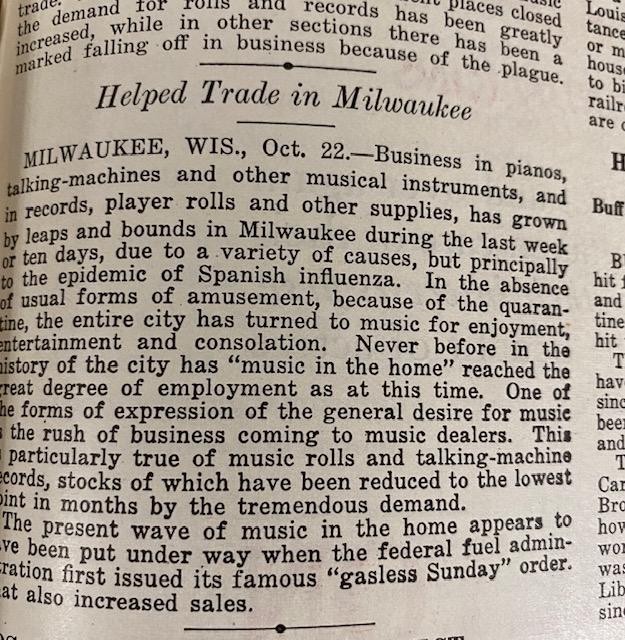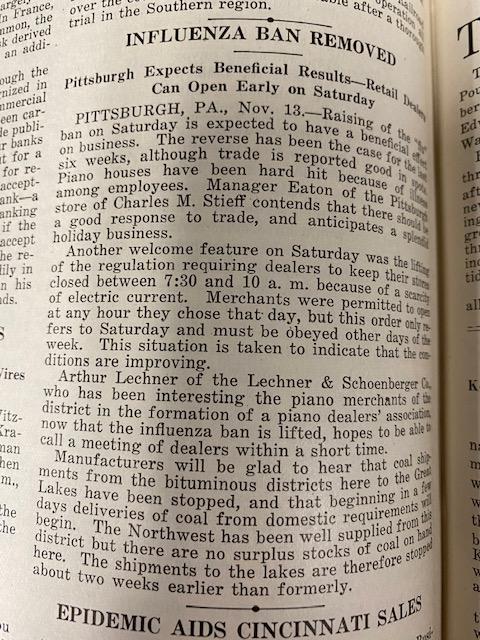History of Industry During 1918 Influenza Pandemic
The NAMM Resource Center is home to one of the largest repositories of artifacts that document not only the history of NAMM itself but also preserve a rich and diverse history of music products and its related fields. From instruments to product advertisements, retail storefront photos, and articles documenting innovations and sales trends, the NAMM archives are a great source of information for the industry.
One newly rediscovered collection within these prestigious archives is a collection of articles from The Music Trades that document the 1918 influenza pandemic that swept the world.
According to the Center for Disease Control and Prevention (CDC), “The 1918 influenza pandemic was the most severe in recent history. It was caused by an H1N1 virus with genes of avian origin.” The first evidence of the virus in the United States was identified in military personnel in the spring of 1918. The CDC estimates that about 500 million people or one-third of the world’s population at that time was infected with the virus. At the time, there was no understanding of influenza combined with the lack of a vaccine and no antibiotics to treat secondary bacterial infections, worldwide efforts to control the spread of the epidemic included isolation, quarantine, good personal hygiene, use of disinfectants, and limits in public gatherings.
With comparable behavioral efforts to stop the spread of the devastating 1918 influenza virus being utilized in 2020 to curb the spread of COVID-19, it makes sense that the music industry is seeing many of the same economic and sales trends from over 100 years ago. Recently, a rediscovered collection of articles from 1918 issues of The Music Trades illustrates that while many industries suffered because of the virus, music retailers, especially piano retailers, often saw a growth in sales.
In 2020, many music retailers across the globe have reported similar sales trends. While brick and mortar locations closed to protect staff, customers, and community, sales often either remained steady or, in many cases, grew as individuals had more time to dedicated to music-making.
The industry can only hope to remain optimistic that, as demonstrated in 1918, the world, in the most difficult of times, often turns to music for a message of hope and inspiration. Knowing that our collective efforts to promote the benefits of making music transcends centuries, survives epidemics and pandemics, and continues to impact our communities can serve to remind us why we are committed to this industry.
Elizabeth Dale
Public Relations Coordinator
Dan Del Fiorentino
Music Historian




